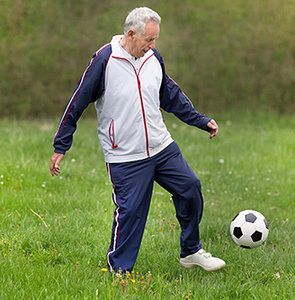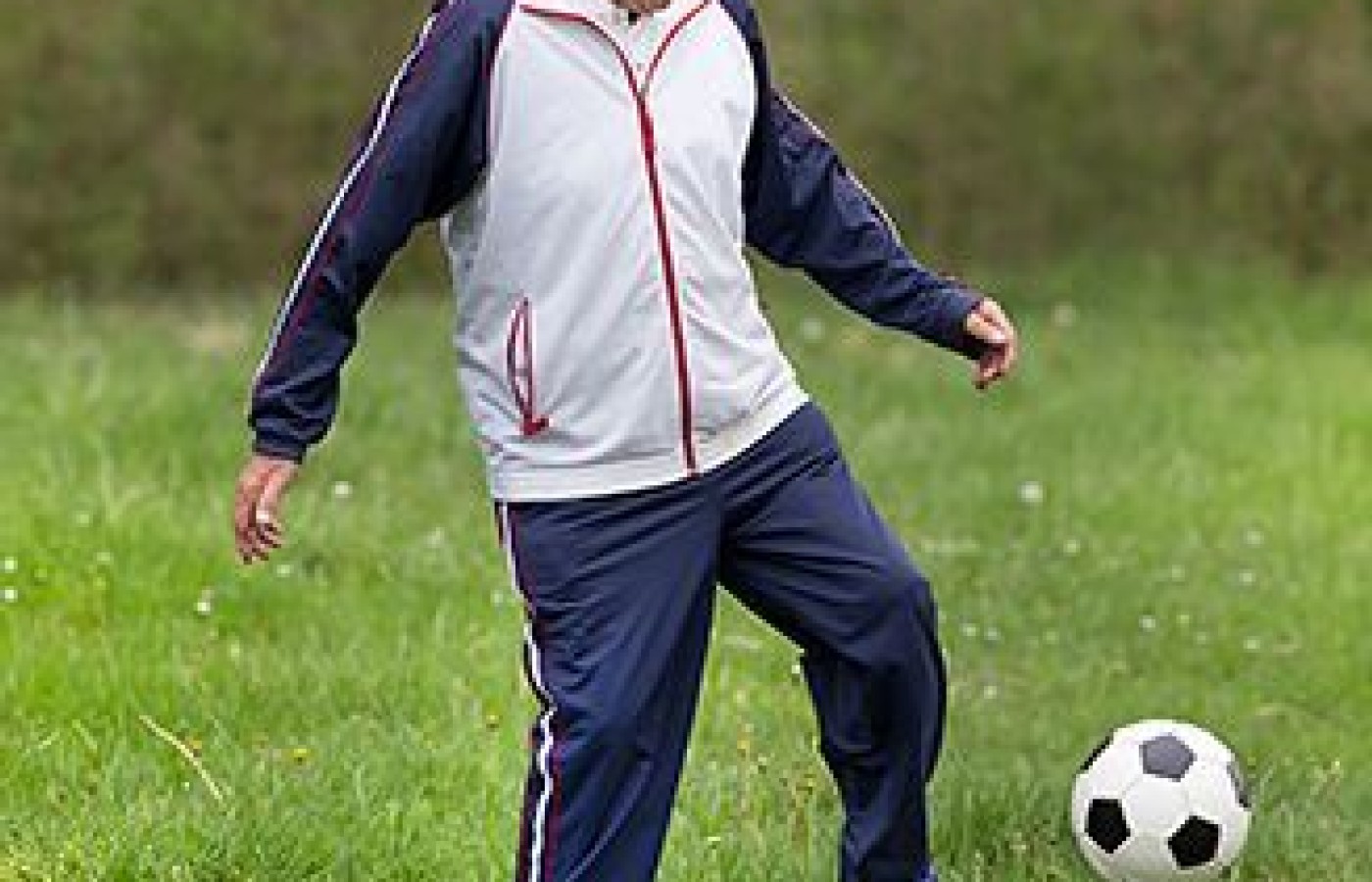On Oct. 21, 2025, a judge in Florida issued a groundbreaking decision in Complete Care v State Farm, 25-CA-1063. It concerns a fact pattern that many chiropractic doctors have faced wherein an insurer, such as State Farm or Allstate, decides to simply stop paying all claims submitted by a healthcare provider.
| Digital ExclusiveSenior Care: Don't Forget the Feet
A number of significant health conditions begin to have a greater impact on our patients as they age. Some of these are not immediately symptomatic, and often patients are unaware of the deterioration until they develop a loss of functional capacity and independence.
Over time, repetitive stresses and normal forces result in a slow breakdown of support for the bones and joints of the feet. Connective tissues (collagen and proteoglycans) are exposed to these long-term lengthening forces, resulting in a decrease in elasticity and a sagging of the foot's arch. Conditions such as loss of balance, diabetes, osteoarthritis and osteoporosis are associated with these degenerative changes in the feet and kinetic chain. They can all be helped with comprehensive chiropractic care, including custom-made, functional orthotics.
Balance Issues
Each year, between one-third and one-half of people 65 or older experience a fall,1 6 percent of which result in fractures. Falling is also the leading cause of accidental death within the same age group.2-3
Chiropractic adjustments of the spine improve proprioceptive input by normalizing joint alignment and muscle tonus. Custom-made functional orthotics work with these adjustments to maximize the support provided by the feet, creating a more stable foundation and addressing structural deficiencies, such as excessive pronation and arch integrity.

In a younger group, Stude and Brink found that "[s]ix weeks of wearing ... custom-made, flexible orthotics has a positive influence in promoting balance and proprioceptive symmetry."4 Custom-fitted inserts are particularly important for the elderly, who have been found to frequently wear improperly-fitted shoes.5
Diabetes
Diabetes continues to increase rapidly across all demographic groups. The effects of diabetes interfere with spinal and lower extremity health, and can significantly increase physical disability. Diabetic patients often develop circulatory problems in the extremities – most commonly in the feet.6-7 As the diabetic process continues, neuropathy can lead to sensory difficulties, which often allows shoe and foot problems to go undetected.8-9
Proper shoe selection can be critical in avoiding excessive frictional stresses to sensitive foot tissues.10 In the initial stages of the condition, a custom-made, functional orthotic with shock-absorbing material that supports normal foot biomechanics is useful. In the final stages of diabetic foot problems, a purely accommodative orthotic is all that can be tolerated. Obviously, it is much better to intervene early in this process and to prevent (or at least slow down) the development of this late stage.
Osteoarthritis
Osteoarthritis occurs at a rate of about 4 percent at age 20 and climbs to 85 percent by age 70.11 It is a noninflammatory degenerative joint disease characterized by degeneration of the articular cartilage, hypertrophy of bone at the margins, and changes in the synovial membrane.12 Noticeable symptoms of the disease result from an ongoing process of wear and tear over a lifetime, and are not an inevitable consequence of aging.13
Because the knee and hip are primary areas involved with osteoarthritis, it is appropriate to look at ways to decrease the amount of stress on those joints in day-to-day activities. Studies have shown that custom-made, functional orthotics will give support to a pronated foot, allowing it to provide better shock absorption, put less stress on the knee joint14-16 and improve the Q angle of the hip, which will put less stress on the hip.17
Osteoporosis
As the population ages and becomes more sedentary, more of our patients are affected by osteoporosis and its complications. With osteoporosis, bone strength is compromised and fractures develop with trivial (or no) trauma.
Bone density and strength are a function of the magnitude and direction of the mechanical stresses that act on bone.18 Assuming the availability of necessary nutrients, stimulus to the osteoblasts results in a net gain in bone mass. Exercise facilitates osteoblastic activity, thereby helping to maintain a positive balance between bone formation and bone resorption.19
To create sufficient stimulus to increase bone density, exercise needs to be weight-bearing and have some impact. All exercises are more effective when done in an upright position, since the entire body is in a closed-chain position during training. These types of exercises are very valuable for the elderly – not just for increasing bone density, but also for preventing stumbles and falls.
Exercise tubing is an excellent tool for strength training of the elderly, since the risks of injury are minimized, and a spotter or expensive equipment aren't needed. And custom-made functional orthotics can provide a stable foundation for weight-bearing exercises.
Clinical Pearls
Many of the chronic conditions reported by older patients will respond best when their chiropractic care is augmented with orthotic intervention. Improving the foundation can have a positive effect on the whole kinetic chain: the foot-ankle complex, knees, pelvis and spine.
Having a system that addresses the most common contributors to microtrauma will allow a more rapid response to chiropractic care, improved patient satisfaction, and an enjoyable and rewarding treatment experience.
References
- Duthie EH Jr. Falls. Med Clin North Am, 1989;73(6):1321-1336.
- Alexander NB, Shepard N, Gu MJ, Schultz A. Postural control in young and elderly adults when stance is perturbed: kinematics. J Gerontol, 1992;47(3):79-82.
- Crawford C, et al. Normative values for healthy young and elderly adult population on the KAT balance system. Issues on Aging, 1995;18;1:10-14.
- Stude DE, Brink DK. Effects of nine holes of simulated golf and orthotics intervention on balance and proprioception in experienced golfers. J Manipulative Physiol Ther, 1997;20:590-601.
- Burns SL, Leese, GP, McMurdo MET. Older people and ill fitting shoes. Postgrad Med J, 2002;78:344-6.
- Kosak GP, Hoar CS et al. Management of Diabetic Foot Problems. Philadelphia: W.B. Saunders, 1984.
- Bild DE, Selby JV, et al. Lower extremity amputations in people with diabetes. Epidemiology and prevention. Diabetes Care, 1989;12(1):24-31.
- Harkless LB, Dennis KJ. "You See What You Look for and Recognize What You Know." Clin Podiatr Med Surg, 1987;4(2):331-339.
- Gibbons GW, Freeman D. Vascular evaluation and treatment of the diabetic. Clin Podiatr Med Surg, 1987;4(2):337-381.
- Dyck PJ, Thomas PK et al., eds. Diabetic Neuropathy. Philadelphia: W.B. Saunders, 1987.
- Meisel AD, Bullough PG. Atlas of Osteoarthritis. Baltimore: Williams & Wilkins, 1984.
- Dorland, WAN. Dorland's Illustrated Medical Dictionary 26th Edition. Philadelphia: W.B. Saunders Company 1985; pg 941.
- Oddis, CV. New perspectives on osteoarthritis. Am J Med, 1996 Feb 26;100(SA):10S-15S.
- Johnston LB, Gross MT. Effects of foot orthoses on quality of life for individuals with patellofemoral pain syndrome. J Orthop Sports Phys Ther, 2004 Aug;34(8):440-8.
- Marks R, Penton L. Are foot orthotics efficacious for treat painful medial compartment knee osteoarthritis? A review of the literature. Int J Clin Pract, 2004 Jan;58(1):49-57.
- Ogata K, Yasunaga M, Nomiyama H. The effect of wedged insoles on the thrust of osteoarthritic knees. Int Orthop, 1997;21(5):308-12.
- Kuhn DR, Yochum TR, Cherry AR, Rodgers SS. Immediate changes in the quadriceps femoris angle after insertion of an orthotic Device. J Manipulative Physiol Ther, 2002 Sept; 25(7).
- Davies GJ. A Compendium of Isokinetics in Clinical Usage. La Crosse, WI: S & S Publishers, 1984.
- Pirnay FM. Bone mineral content and physical activity. Int J Sports Med, 1987;8:331-335.



